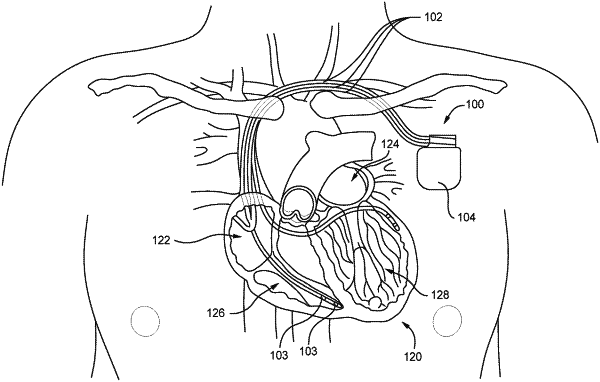| CPC A61B 5/02055 (2013.01) [A61B 5/0084 (2013.01); A61B 5/02028 (2013.01); A61B 5/287 (2021.01); A61B 5/349 (2021.01); A61B 5/686 (2013.01); A61B 5/6869 (2013.01); A61B 8/0883 (2013.01); A61B 8/12 (2013.01); A61N 1/3956 (2013.01); A61B 5/02154 (2013.01)] | 39 Claims |

|
1. A method for determining hemodynamic stability of a subject, comprising:
transmitting an optical signal via at least one optical fiber disposed in a heart of the subject, wherein the at least one optical fiber includes at least one fiber Bragg grating (FBG) and is configured to bend with contraction and relaxation of the heart;
receiving a reflected portion of the optical signal via the at least one optical fiber;
analyzing bending of the at least one optical fiber based on a change in at least one parameter of the received reflected portion of the optical signal, wherein the at least one parameter change includes a Bragg wavelength shift, and wherein the Bragg wavelength shift is indicative of an amount of bending of the at least one optical fiber due to contraction and relaxation of the heart; and
determining the hemodynamic stability of the subject based on the Bragg wavelength shift.
|